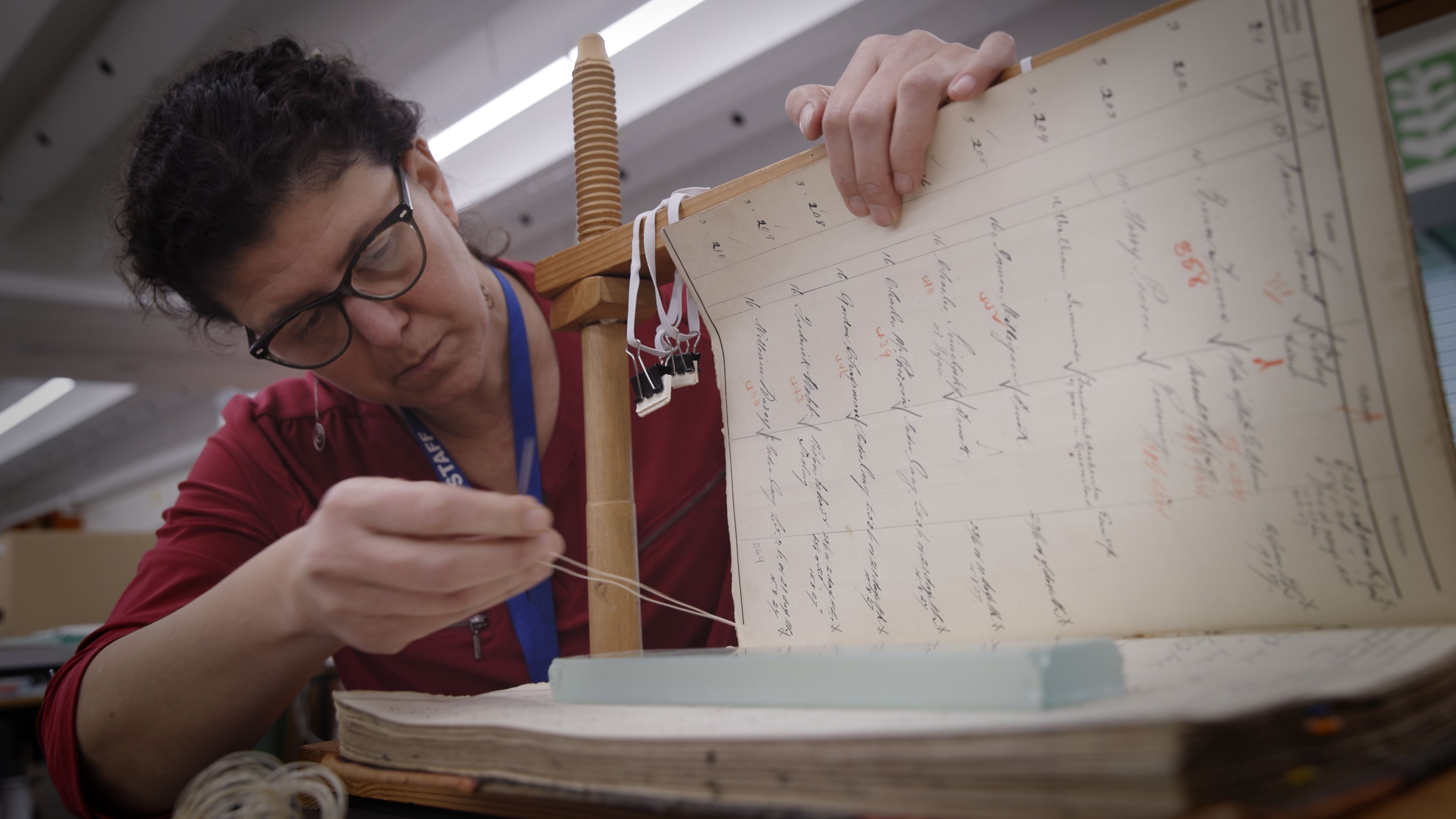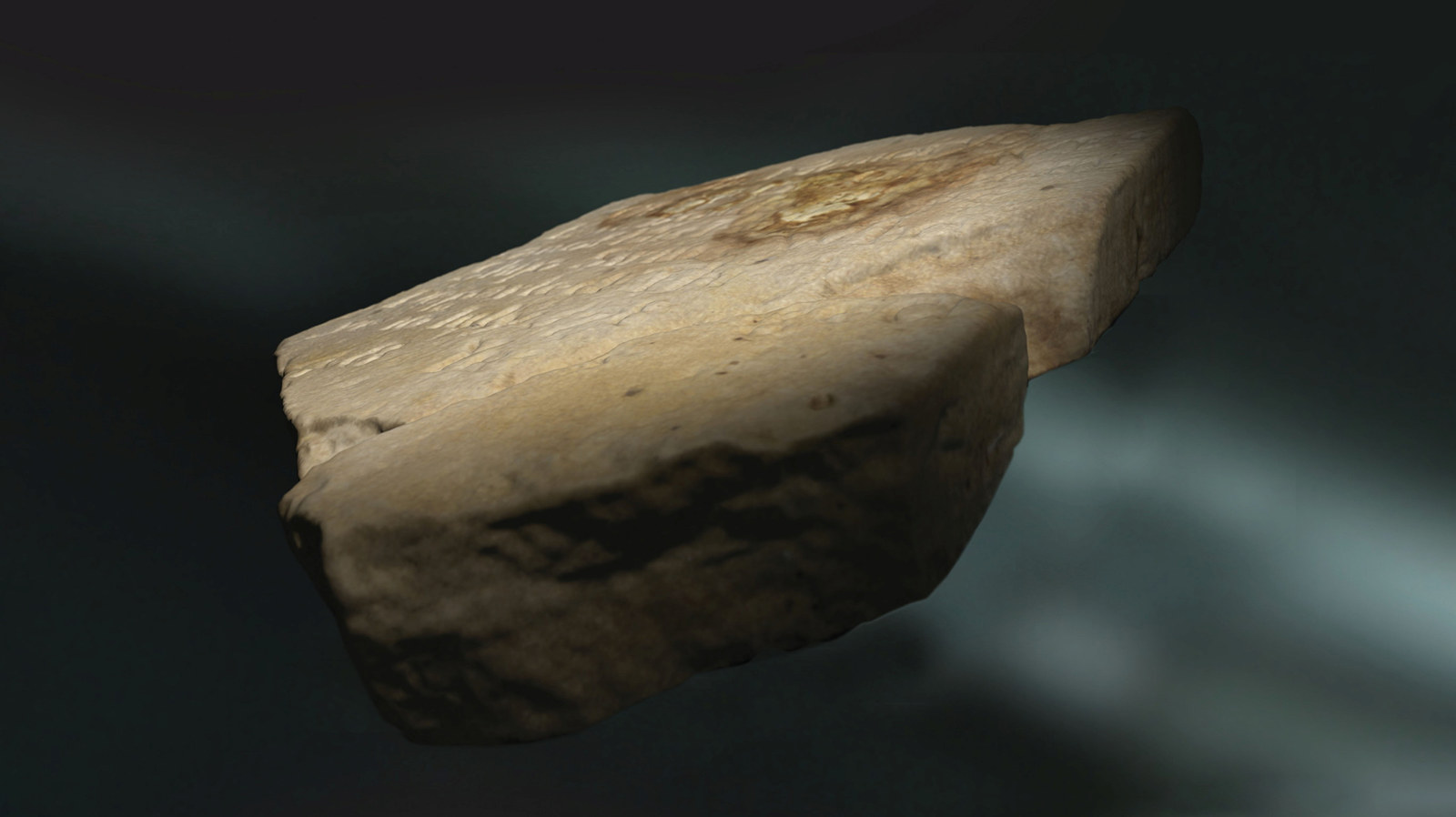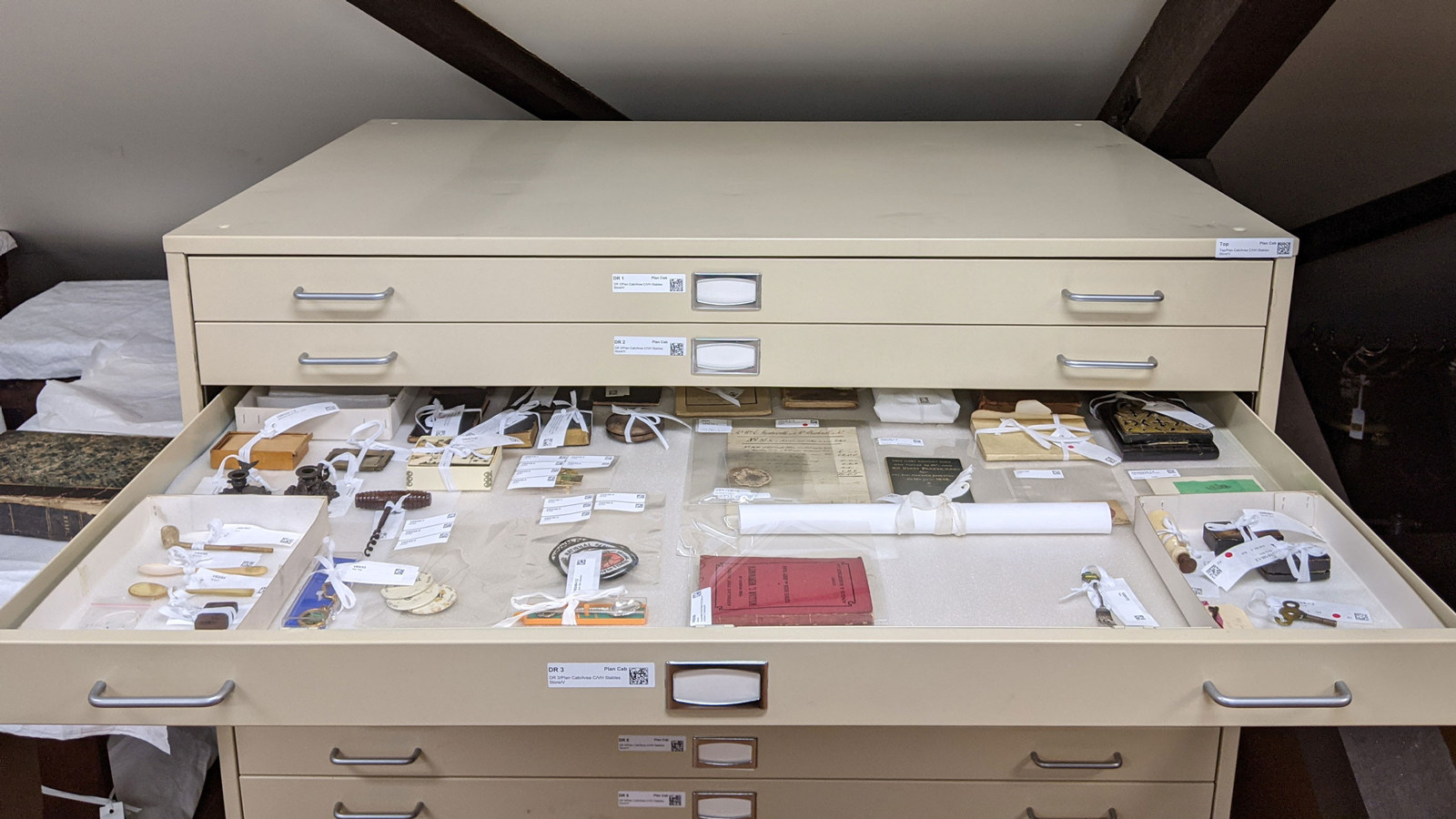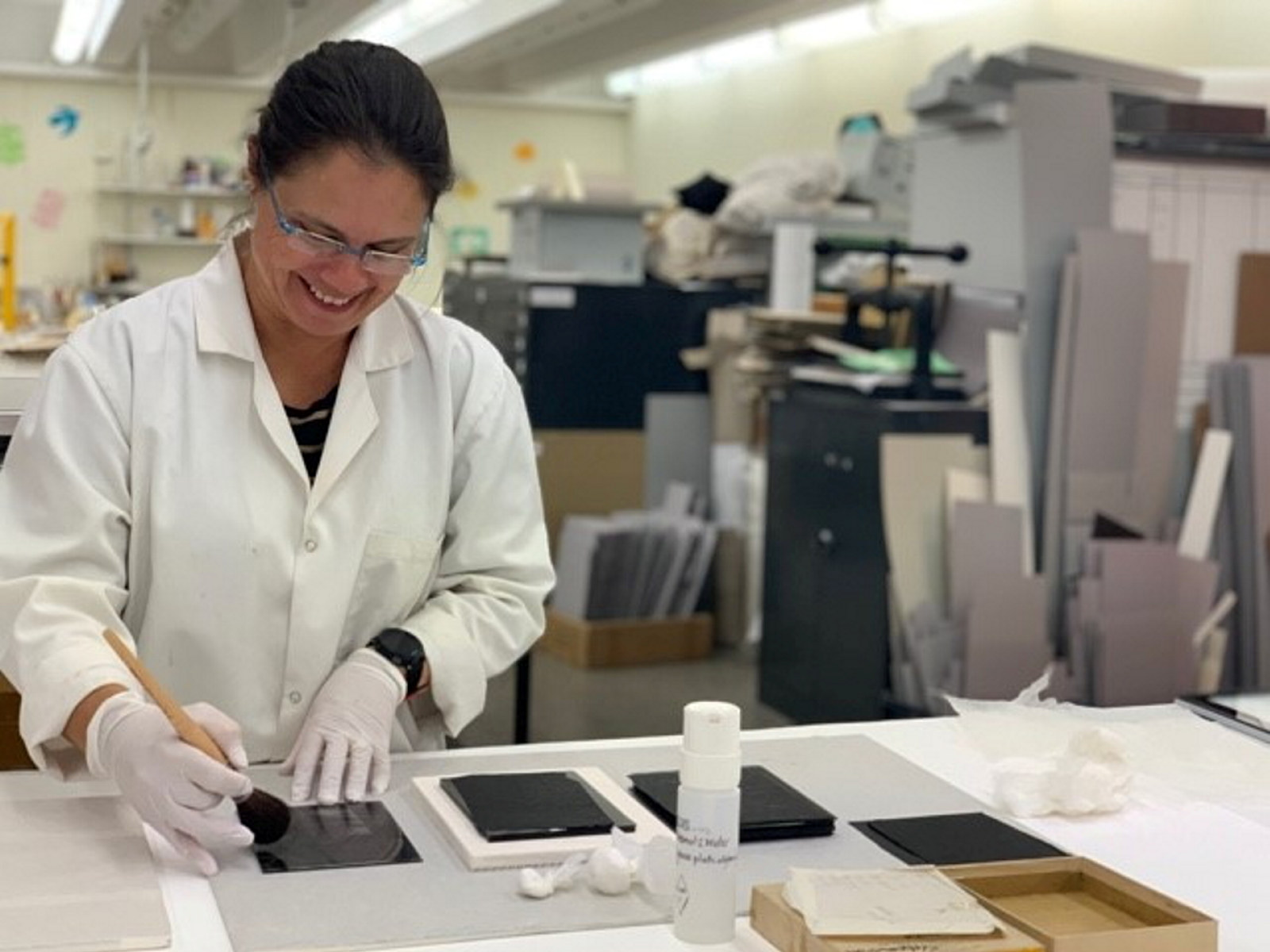An immersive solution to preserving the past
An important part of Collections Care work at the Western Sydney Records Centre is to conserve records that have been requested by readers and assessed as requiring repair.
Conservator Abigail Hundley has been preparing a box of signalmen’s records (RNCG-6772-1-[A4382]) recently requested by a reader. An almanac and post office directory –a supplement to The Sydney Morning Herald from 1 January 1858 – in very poor condition was found within this box of records. The item had suffered extensive insect damage in the past. It could not be handled as the paper resembled lace from the damage and was incredibly brittle. We decided to immersion wash the item to reduce staining and strengthen the paper fibres and then line it with Japanese tissue so it could be handled safely. This also gave us the opportunity to use our new washing sink and wet area, which was only installed in the laboratory last year.
To acclimate the paper before the immersion bath, the item was humidified with a light spray of deionised water.
The item was then immersion washed in our new sink. Washing a paper item in an immersion bath can remove soluble staining and brighten the paper. It can also strengthen the paper fibres, as when the paper soaks up the water and dries it re-forms hydrogen bonds in between the fibres.
After about an hour, the item was carefully removed from the sink by lifting the supporting sheet of Hollytex (a non-woven fabric) and then placed face down onto the wet area bench in readiness for lining. The new sink is mobile and can be moved out to allow staff to access the sides
The tissue with applied paste was then placed with the adhesive side down onto the back (verso) of the item.
We used diluted wheat starch paste as the adhesive to attach the lining. Here, Abby is brushing the paste onto Japanese tissue paper. We chose this paper as it is lightweight but strong and flexible
Traditionally, the last step may have been completed using a long wooden stick, but here we’ve used a sheet of mylar (polyester) to position the lining sheet on the item. Abby then used a Japanese smoothing brush to ensure the tissue has a good bond to the item.
The item was dried in between blotters and under weight for a few days.
Here is the item after treatment. The paper is brighter, and more importantly the lining means that it can be handled, read, and preserved for future access.
Before treatment
After treatment
Published on
Read more

Conserving the archive
Supervising conservator Dominique Moussou talks through her work and some of the projects underway in the MHNSW conservation lab

Historic houses in 3D
A project to capture 3D scans of MHNSW properties will greatly assist conservation work and create exciting new interpretation opportunities far into the future

Barcoding our collection
During the 2021 COVID lockdown, a team was busy working behind the scenes to implement technology that will improve how we manage our collections & make them more discoverable for our audiences

Archives behind the scenes - unboxing a glass plate negative
In this episode we visit the Conservation Lab where Elizabeth shows us how to unbox glass plate negatives - very gently!
